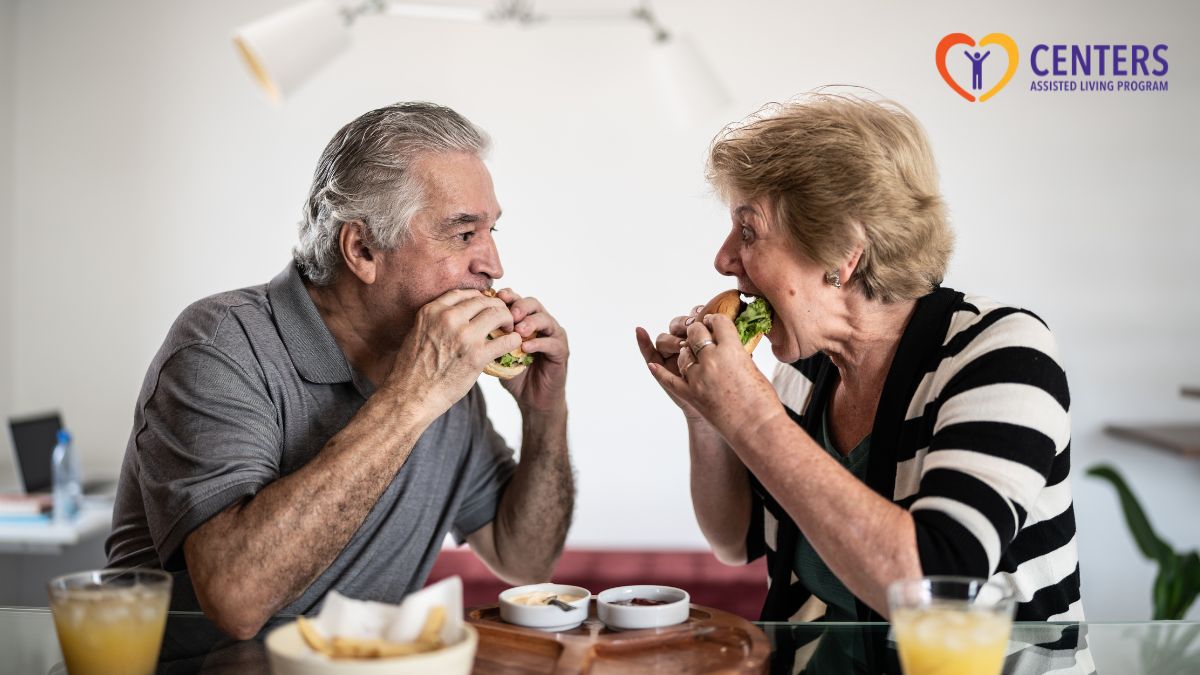Key Points:
- Assisted living for couples keeps partners together through shared housing and personalized care plans.
- Communities offer one- or two-bedroom layouts, split service plans, and nearby memory care when needs differ.
- Costs include base rent, second-person fees, and individual care charges, supporting unity and independence together.
When one partner needs help and the other wants to stay close, choices can feel narrow and urgent. Assisted living for couples solves that gap by pairing one home with two individualized care plans, so daily life stays shared even when needs differ.
Up ahead, you’ll know how to compare apartments, decode second-person fees, and plan for “what if” moments without splitting up. Step into practical ways to keep the partnership intact while care grows around it.
 Assisted Living for Couples: Room Setups That Work
Assisted Living for Couples: Room Setups That Work
Assisted living for couples focuses on shared living rather than general care levels, which many families first compare through levels of care in assisted living. It explains how married partners can stay together in one residence, with personalized support and transparent pricing.
A recent national report estimates about 1 in 9 adults age 65+ live with Alzheimer’s. Many couples start planning when one spouse shows early memory loss. Couples care starts with the apartment. Space, privacy, and access to help all affect daily life. Communities usually offer several layouts and “homes for couples” that support shared living.
Common layouts couples compare:
- One-bedroom with living area. Shared bedroom, shared bath. Works when both partners want close proximity and a simpler footprint.
- Large one-bedroom or “deluxe” one-bedroom. Extra living space or a den supports mobility devices and hobbies.
- Two-bedroom. Separate sleeping areas; one partner can rest while the other reads or watches TV. Useful when care needs disrupt sleep.
- Companion or “shared” suites. Purpose-built for two residents; often priced below two separate studios.
Features that help partners live well together:
- Step-free bathrooms with grab bars and roll-in showers reduce fall risk.
- Kitchenettes for light snacks and morning routines together.
- Sound-buffering for better sleep if one partner wakes at night, with an emergency call system within reach.
- Storage for medical supplies, mobility aids, and favorite items you both use daily.
Questions to ask during a tour (use once per section keyword naturally):
- Can couples live together in assisted living and still personalize care plans?
- Are emergency call systems reachable from both sides of the bed?
- Can the community convert an apartment if one spouse later needs memory care?
Independent Living for Couples vs. Assisted Living: How to Decide
Some couples in New York weigh independent living against assisted living in New York when daily help starts to add up. The right fit depends on daily help, not age.
Choose independent living when:
- Housekeeping, meals, and social life are the main needs.
- No daily hands-on help is required for bathing, dressing, or medication.
- Driving or private transport solves most errands.
Choose assisted living when:
- Help is needed with one or more activities of daily living.
- Safety concerns show up around showers, falls, or meds.
- A partner feels worn down by caregiving and needs reliable backup.
Bridge options that keep partners in one address:
- Concierge or in-home aides added to an independent living apartment for a few hours a day.
- Trial moves into assisted living for a month to test support without a long commitment.
- Short-term respite during medical recovery so both spouses rest while staying together on the same campus.
 Split-Service Plans: When One Partner Needs More Help
Split-Service Plans: When One Partner Needs More Help
Assisted living facilities for married couples often write two service plans under one lease. Each plan sets support for the person who needs it, while shared services remain bundled.
How split plans usually work:
- Base rent covers the apartment, utilities, meals, housekeeping, and life enrichment for two.
- Care points or tiers apply to the spouse who needs hands-on help. The independent spouse may pay little or no care fee.
- Medication support can be added for one spouse only.
- Meal flexibility allows partners to dine together or choose room service during recovery.
Why this helps couples:
- Partners stay united without overpaying for care one person does not need.
- Daily roles feel fair; the care plan handles tasks that strain the relationship.
- The independent spouse keeps routines, friendships, and personal time on site.
When One Spouse Needs Memory Care
Some couples face a stage where one partner needs memory care and the other only needs assisted living. Many communities are built for this setup. They have a secure memory care area with trained staff and calm, familiar spaces. The other partner stays nearby in assisted living, making visits and shared routines easy every day.
Ways communities support “split settings” while staying close:
- Adjacency: Apartments near the memory care entrance reduce travel time for daily visits.
- Shared dining or events: Couples meet for music, garden walks, or community events for seniors when appropriate.
- Care transitions: If dementia progresses, the campus supports a smooth move without a sale of furniture or a change of physicians.
Tip for families searching “residential care for married couples”: Ask if the community allows one lease across two settings and how billing looks if memory care becomes necessary.
 The Real Costs: How to Read Fees for Two People
The Real Costs: How to Read Fees for Two People
Cost comparisons feel tricky because line items vary. Focus on apples-to-apples: base rent, second-person fees if any, care charges by person, and extras like medication passes or transportation.
Typical building blocks for the cost of assisted living for a married couple:
- Base rent for the apartment. Priced by size and view.
- Second-person fee. Some communities add a monthly amount to cover meals and utilities for the second resident.
- Care plan fees. Only for the spouse who needs support, unless both need care.
- Medication program fees. Per med pass or per month depending on policy.
- A la carte services. Hair care, guest meals, covered parking, private transport.
A recent national release puts the annual median assisted living cost at $70,800 across the U.S., reflecting a jump from the prior year; this helps you benchmark local quotes. Divided across 12 months, that’s about $5,900 per month before any second-person or care fees.
Daily Life Together: Routines That Keep Couples United
Relationships thrive on small routines. Assisted living for couples supports time together and time apart. The right rhythm helps both spouses feel at home.
Routines that help:
- Shared morning plan. Coffee in your own kitchenette, a short walk, then breakfast in the dining room.
- Activity alignment. One spouse joins chair exercise while the other attends a book club.
- Private rest windows. Staff time showers and therapy so afternoon quiet remains predictable.
Services that reduce stress:
- Weekly housekeeping keeps energy for meaningful time together.
- On-site clinics and 24/7 professional care lower the need for off-site trips.
- Concierge transport supports date nights and family events.
When families ask how long couples usually remain in assisted living, national data show a median stay around 22 months before a change in care level. Plan for that window as you compare contracts and renewal terms.
Can Married Couples Live in Assisted Living and Keep Their Identity?
Couples want togetherness without losing a sense of self. Good communities encourage both.
Ways communities support individuality:
- Two activity calendars followed by one shared calendar for “together time.”
- Personalized dining. Different diet needs handled without fuss.
- Choice in personal care. One spouse may prefer a same-gender aide; the other may choose a different schedule.
Room-design tips when setting up homes for couples:
- Bring two favorite chairs and create a reading corner.
- Use soft lighting to reduce glare for the partner with vision changes.
- Place memory cues, like photo shelves, labeled drawers, and an easy-to-read daily schedule, at eye level.
 What to Ask on Tours?
What to Ask on Tours?
Tours bring clarity when questions stay specific. Use this list to compare residential care for married couples across several communities.
Apartment & access
- Are grab bars, seated showers, and non-slip floors standard in all layouts for couples?
- Can we reserve a unit near elevators or the memory care entrance if needed?
- Is there 24/7 staff response and how is it measured?
Care & staffing
- Will each spouse have a separate care assessment and plan?
- How are care fees updated, like by points, tiers, or minutes, and how often?
- What happens if one spouse returns from the hospital with new needs?
Life enrichment
- Do calendars include options that suit both spouses’ interests?
- Are there volunteer roles or small leadership tasks for residents who want to help?
- Can we host family dinners in private dining rooms?
Costs & policies
- What is the second-person fee, if any, and what does it include?
- How are medication services priced per spouse?
- What is the notice period if we transition one spouse to memory care?
Planning Ahead: Financial and Legal Steps That Protect Couples
Strong planning keeps choices open. The earlier you prepare, the easier moves feel when health changes arrive.
Core steps to handle now:
- Powers of attorney for health care and finances for both spouses.
- Beneficiary and title reviews so assets pass as intended.
- Long-term care insurance claim review; ask how benefits pay inside assisted living.
- Veterans benefits screening if either spouse served.
- Move plan for furniture, supplies, and a first-week routine.
Estimate the cost of assisted living for a married couple with a simple worksheet:
- Monthly base rent
- Second-person fee (if any)
- Care plan fee for Spouse A
- Care plan fee for Spouse B (if needed)
- Medication program fees
- Transportation and incidentals
- Total monthly estimate
Bring the worksheet to each tour. Ask the community to fill it out in writing for apples-to-apples comparisons.
 Move-Day Tips
Move-Day Tips
First days set the tone. Keep the plan simple and personal.
Before move-in:
- Pack a “first 48 hours” tote with meds, glasses, chargers, and basic clothes.
- Label drawers and shelves.
- Place a framed photo on the hall table to make the new front door feel familiar.
On move-day:
- Aim for a morning arrival.
- Meet the care team and set the next medication pass time.
- Unpack favorite chairs, bedding, and the coffee setup first, then confirm room details with our centers if anything needs adjusting.
After move-in:
- Agree on two daily activities to anchor the routine.
- Schedule one family meal in week one.
- Book a wellness check-in at day 30 to fine-tune care plans.
Frequently Asked Questions
What is the average cost of assisted living per day?
Assisted living average cost per day equals about $194 using a $70,800 annual median. Local market, apartment size, service bundle, and second-person fees shift the per-day figure. Use per-day math to compare quotes by dividing monthly or annual totals by days and adding each spouse’s care plan charges.
Who cannot live in assisted living?
People who need 24-hour medical care cannot live in assisted living. Continuous IV therapy, ventilator use, complex wound treatment, or constant monitoring require a nursing home. Assisted living suits those needing help with daily activities but not intensive medical care. Rehab stays may bridge post-surgery needs temporarily.
How long does the average person live in an assisted living facility?
The average person lives about 22 months in an assisted living facility. Length of stay varies with health, finances, and support needs. Many residents transition to nursing homes or memory care after this period, while some remain longer due to stable health and consistent on-site services.
Choose United Living: Keep Your Partnership at the Center
Assisted living for couples can honor two people and one home. Couples often need tailored help, steady routines, and a clear plan for future memory care. Good assisted living in New York means meals you enjoy together, a care team that respects both voices, and activity options that keep the bond strong.
At Centers Assisted Living, we offer a community approach that supports shared apartments, individualized service plans, and on-site memory care options when one spouse needs more support. Reach out to schedule a tour and see how we help couples stay united while care grows around them.


